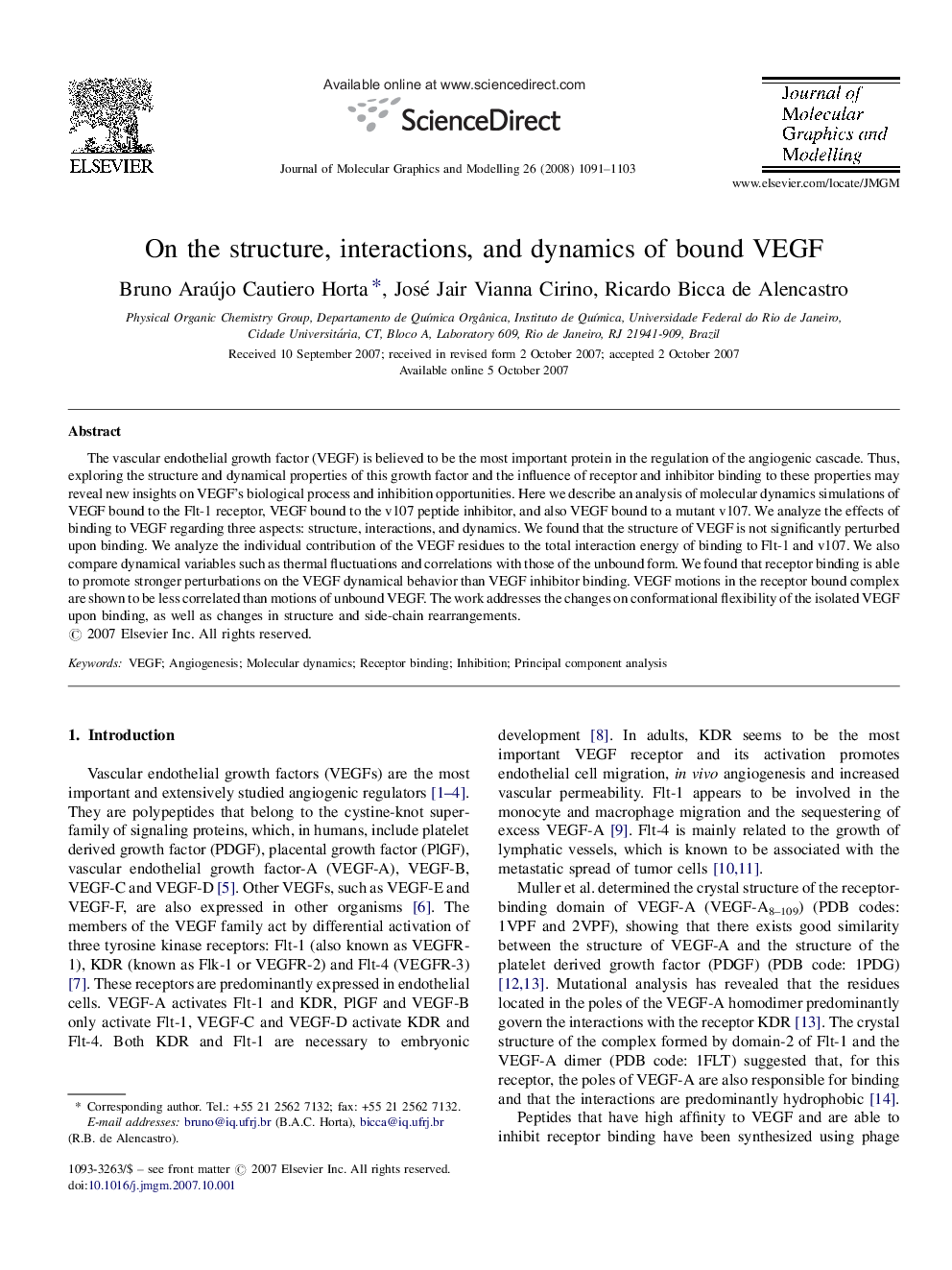| Article ID | Journal | Published Year | Pages | File Type |
|---|---|---|---|---|
| 444684 | Journal of Molecular Graphics and Modelling | 2008 | 13 Pages |
The vascular endothelial growth factor (VEGF) is believed to be the most important protein in the regulation of the angiogenic cascade. Thus, exploring the structure and dynamical properties of this growth factor and the influence of receptor and inhibitor binding to these properties may reveal new insights on VEGF's biological process and inhibition opportunities. Here we describe an analysis of molecular dynamics simulations of VEGF bound to the Flt-1 receptor, VEGF bound to the v107 peptide inhibitor, and also VEGF bound to a mutant v107. We analyze the effects of binding to VEGF regarding three aspects: structure, interactions, and dynamics. We found that the structure of VEGF is not significantly perturbed upon binding. We analyze the individual contribution of the VEGF residues to the total interaction energy of binding to Flt-1 and v107. We also compare dynamical variables such as thermal fluctuations and correlations with those of the unbound form. We found that receptor binding is able to promote stronger perturbations on the VEGF dynamical behavior than VEGF inhibitor binding. VEGF motions in the receptor bound complex are shown to be less correlated than motions of unbound VEGF. The work addresses the changes on conformational flexibility of the isolated VEGF upon binding, as well as changes in structure and side-chain rearrangements.
